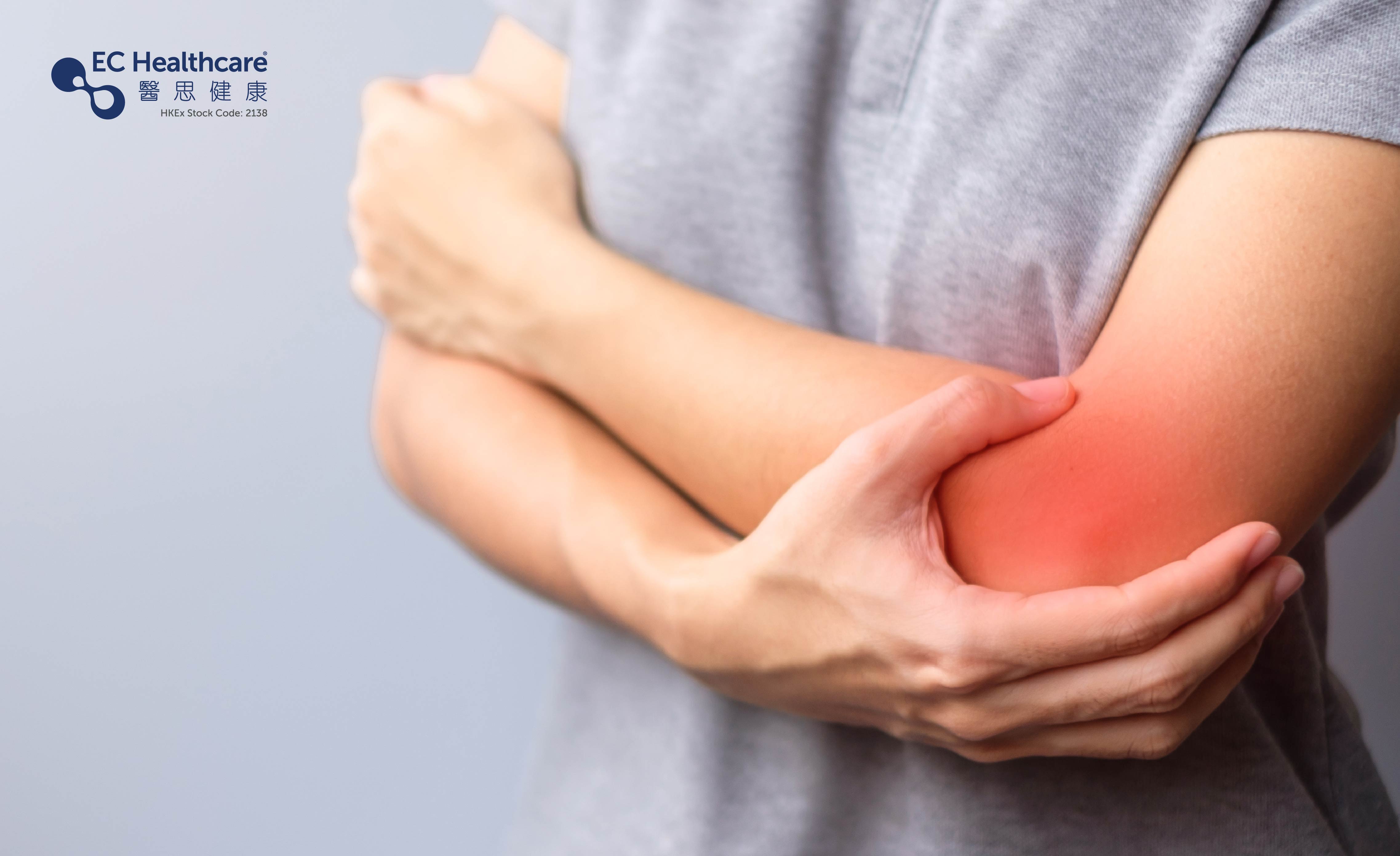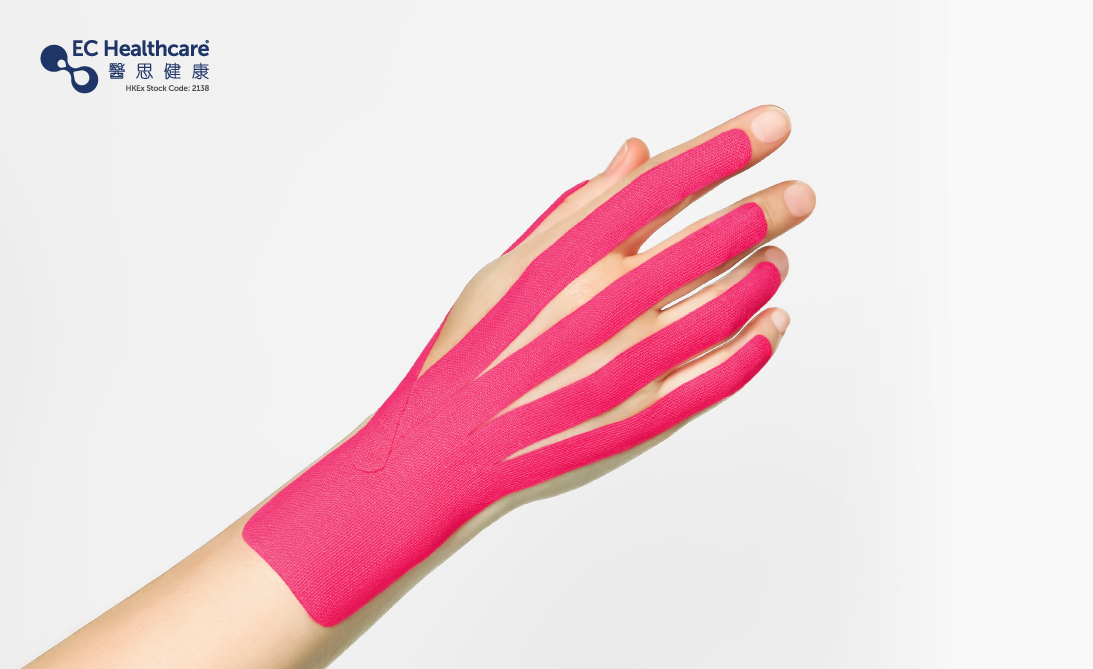Tennis Elbow: All You Need to Know About the Prevalent Elbow Issue


Tennis elbow is a common issue, which is understandable. Our hands are a useful tool for various activities such as grabbing objects, using phones, typing on computers, playing video games, chopping vegetables, and carrying babies. Over time, these repetitive actions can lead to cumulative strain, leading to tennis elbow.
While tennis elbow can be treated, it is prone to recurrence, especially if patients do not revise their incorrect hand postures and habits. Therefore, it takes time to tackle this issue.
Mr Chan (pseudonym) is a roasted meat chef who has been in the industry for a year. He works in the restaurant kitchen for about 10 hours a day, mainly chopping roasted meat and preparing take-out orders.
In the past six months, he noticed pain in his right elbow without any specific injury. At first, he tried to address the pain with painkillers and pain relief patches, but the pain did not improve and worsened instead, even spreading to his forearm. Then, he sought treatment for his elbow but did not experience significant improvement. Additionally, he started experiencing neck pain and decided to seek chiropractic care.
Treating the roasted meat chef’s tennis elbow in multiple ways
After a chiropractic examination, it was discovered that besides tennis elbow, Mr Chan had also developed cervical radiculopathy due to prolonged periods of looking down while handling food. In addition to treating his elbow, the chiropractor addressed the issues related to his cervical spine as well. After 2 to 3 months of treatment, his neck and elbow pain improved. Following the chiropractor's advice, Mr Chan focused on doing rehabilitation exercises for his forearm muscles and started using lighter knives. He adjusted the position and height of the cutting board as well. After about a year of treatment, his recovery has reached around 80 to 90 percent.
"Tennis elbow" is actually a common term for "lateral epicondylitis". It is a condition characterized by inflammation of the tendons, resulting in pain. According to chiropractor Dr Steve Yun, medical literature from 2006 pointed out that approximately 13 out of every 1000 people worldwide suffer from tennis elbow. This condition is mainly caused by repetitive or excessive movements of the hand and wrist, or frequently exerting force incorrectly, leading to wear and tear injury and inflammation of the tendons, hence pain in the outer elbow.
Excessive, repetitive and improper use as the cause
Tennis elbow, as the name suggests, is associated with playing tennis. As the muscles on the outer side of the forearm are lesser and weaker than those on the inner side, incorrect or excessive use of force when making a backhand stroke in tennis can lead to tennis elbow. However, apart from playing tennis, many everyday activities that involve excessive or repetitive movements or improper use of force can also lead to tennis elbow, such as using a mouse, typing on a keyboard, using a mobile phone, cutting ingredients, cooking and driving, all of which can potentially cause tennis elbow.
In the past, professions more prone to developing tennis elbow included tennis players, carpenters, bricklayers, gardeners, chefs, dentists, and violinists. However, this condition is now commonly seen in long-term computer users, housewives, cleaners and construction workers. It typically occurs in individuals between 30 and 50 years old, but it can also develop at any age for those who extensively use their forearms. While body size or weight is generally not a contributing factor, studies have shown that smokers and diabetic patients are at a higher risk of developing the condition.
Unable to hold a water cup due to pain
If you suspect that you have tennis elbow and are experiencing pain, Dr Steve Yun suggests receiving prompt medical attention. He explained, "Please consult healthcare professionals for examination and treatment, since elbow pain can also be caused by other issues such as muscle strain, avulsion fracture, radial head dislocation, or even cervical radiculopathy caused by nerve compression."
Clinical symptoms of tennis elbow include pain on the outer side of the elbow, which sometimes extends to the extensor muscles of the wrist. Bending the wrist or fingers upwards can trigger elbow pain. The forearm may feel sore and weak when lifting heavy objects. Patients may also experience difficulties when performing daily activities such as opening bottle caps, opening doors, cutting vegetables, holding a water cup, and using a mouse, and suffer from stiff elbows and arms.
If patients stop all repetitive forearm movements and take a long rest, their tennis elbow has a chance to heal on its own. However, without receiving proper treatment, the condition is more likely to recur. To treat tennis elbow, doctors may prescribe anti-inflammatory and pain-relieving medications, and in severe cases, inject steroids or perform surgery.
Pay attention to posture to prevent recurrence
In terms of chiropractic care, the chiropractor will first examine the patient’s condition and rule out other diseases. They will then utilize manual therapy to correct any subluxations and release soft tissue adhesions. Depending on the patient's condition, complementary treatments such as cold or hot compress, radiotherapy, therapeutic ultrasound, or shockwave therapy may also be used. Dr Steve Yun explained, "With targeted treatment and rest, patients generally experience relief within two to three weeks, and approximately 80-90% of patients see improvement or even complete cure of symptoms within 12 to 18 months."
It is worth noting that tennis elbow is prone to recurrence, as the previously injured area tends to be more vulnerable than before. If patients do not receive proper treatment, fail to get sufficient rest after treatment, and do not revise their repetitive movements or incorrect habits, the condition can recur and it will be hard to relieve the pain significantly.
To prevent tennis elbow, Dr Steve Yun suggests changing postures in work and daily life, avoiding prolonged and repetitive movements, and taking appropriate breaks when needed. Patients should also reduce their workload which may contribute to their condition, use tools to minimize forearm usage, wear elbow supports, and engage in muscle rehabilitation exercises to strengthen the injured muscles.









